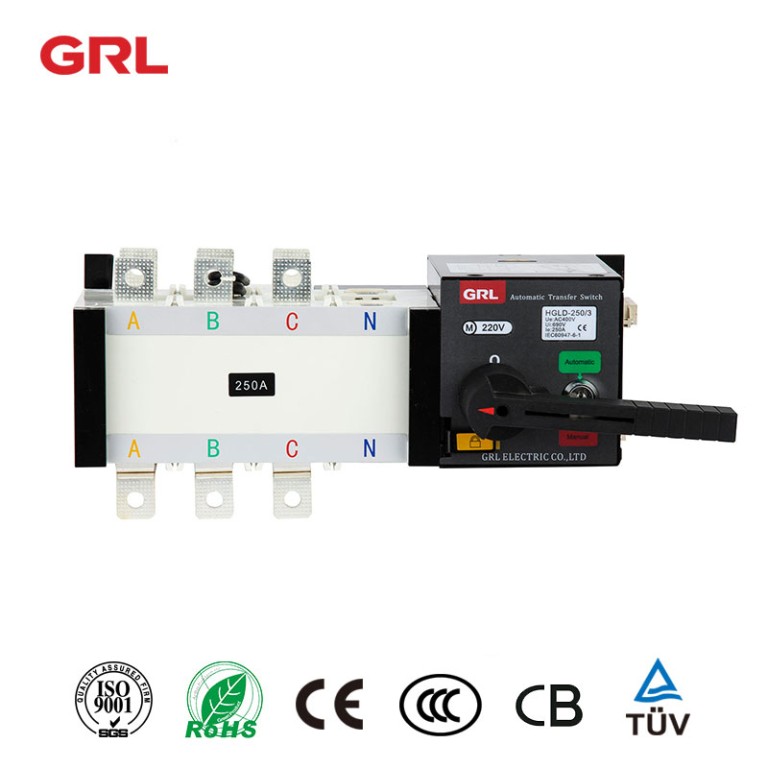
# Automatic Transfer Switch: Ensuring Uninterrupted Power Supply
## What is an Automatic Transfer Switch?
An automatic transfer switch (ATS) is a critical component in backup power systems that automatically transfers electrical load from a primary power source to a standby generator when utility power fails. This seamless transition ensures continuous power supply to essential equipment and systems.
## How Does an Automatic Transfer Switch Work?
The operation of an automatic transfer switch involves several key steps:
– Continuous monitoring of the primary power source
– Detection of power failure or voltage fluctuations
– Automatic startup signal to the standby generator
– Transfer of electrical load to the generator once it reaches proper voltage and frequency
– Monitoring of utility power restoration
– Automatic transfer back to primary power when stable
– Generator cool-down sequence
## Types of Automatic Transfer Switches
### 1. Open Transition ATS
Also known as “break-before-make,” this type briefly interrupts power during transfer (typically 1-3 seconds). It’s the most common and cost-effective solution for most applications.
### 2. Closed Transition ATS
This “make-before-break” switch momentarily parallels both power sources during transfer, providing truly seamless power with no interruption.
### 3. Delayed Transition ATS
Designed for loads with high inrush currents, this type includes a programmed delay to allow residual voltage to decay before transfer.
Keyword: Transfer Switch
## Key Features of Modern ATS Systems
– Microprocessor-based controls for precise monitoring
– Built-in diagnostics and self-testing capabilities
– Remote monitoring and control options
– Adjustable voltage and frequency sensing
– Programmable time delays for various operations
– Load shedding capabilities for critical applications
## Applications of Automatic Transfer Switches
Automatic transfer switches are essential in numerous settings:
– Hospitals and healthcare facilities
– Data centers and telecommunications
– Industrial manufacturing plants
– Commercial buildings
– Emergency services and public safety facilities
– Residential applications with standby generators
## Benefits of Using an Automatic Transfer Switch
– Uninterrupted power supply for critical operations
– Protection against power fluctuations and outages
– Automatic operation eliminates need for manual intervention
– Reduced downtime and associated costs
– Improved safety by preventing backfeeding into utility lines
– Extended equipment life by preventing abrupt power interruptions
## Selecting the Right ATS for Your Needs
When choosing an automatic transfer switch, consider:
– Electrical load requirements (voltage, amperage, phases)
– Transfer time requirements for your equipment
– Space constraints for installation
– Environmental conditions (indoor/outdoor, temperature)
– Future expansion possibilities
– Compliance with local electrical codes and standards
## Maintenance Considerations
Regular maintenance ensures optimal ATS performance:
– Periodic testing of transfer functionality
– Inspection of electrical connections
– Cleaning of contacts and components
– Verification of control settings
– Lubrication of moving parts as needed
– Documentation of all maintenance activities
## The Future of Automatic Transfer Switches
Emerging trends in ATS technology include:
– Integration with smart grid systems
– Advanced predictive maintenance capabilities
– Enhanced cybersecurity features
– Improved energy efficiency designs
– Greater compatibility with renewable energy sources
– More compact and modular designs
Automatic transfer switches play a vital role in modern power management systems, providing reliability and peace of mind for critical power applications. By understanding their operation and features, facility managers can ensure they select and maintain the right ATS solution for their specific needs.
